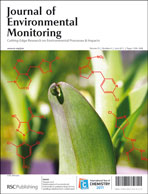Forecasting of cyanobacterial density in Torrão reservoir using artificial neural networks
Abstract
The ability of general regression neural networks (GRNN) to forecast the density of cyanobacteria in the Torrão reservoir (Tâmega river, Portugal), in a period of 15 days, based on three years of collected physical and chemical data, was assessed. Several models were developed and 176 were selected based on their correlation values for the verification series. A time lag of 11 was used, equivalent to one sample (periods of 15 days in the summer and 30 days in the winter). Several combinations of the series were used. Input and output data collected from three depths of the reservoir were applied (surface, euphotic zone limit and bottom). The model that presented a higher average correlation value presented the correlations 0.991; 0.843; 0.978 for training, verification and test series. This model had the three series independent in time: first test series, then verification series and, finally, training series. Only six input variables were considered significant to the performance of this model: ammonia,


 Please wait while we load your content...
Please wait while we load your content...